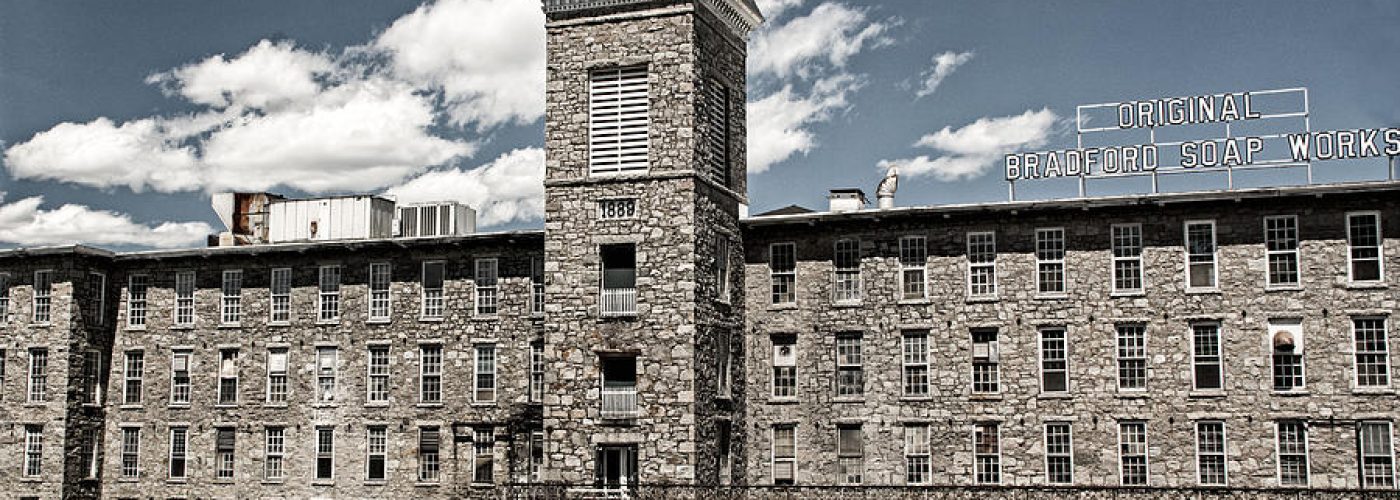Despite its unassuming and at times unflattering reputation over the years, the city of Bradford in West Yorkshire was once a northern powerhouse of epic proportions. Not just the most affluent city in West Yorkshire, Bradford was also, at one time, one of the most prosperous cities in the world with an influence on industry and politics worldwide.
Indeed, the strike at Manningham Mill textile factory from 1890-91 which sought to achieve better wages for workers reflected the wider socio-economic situation of the era and saw the introduction of the Independent Labour Party, a precursor to the Labour Party we know today.
But where did it all start?
Whilst a modest settlement had existed in the area since the Anglo-Saxon period, Bradford really came into its own during the 19th century and the onset of the Industrial Revolution. The city’s plentiful sources of coal, iron ore and soft water saw its rapid expansion as a manufacturer of textiles, especially wool. Indeed, at one point, Bradford was referred to as the “wool capital of the world”. With the expansion of industry came the population boom and significant investment in the area which can still be seen today in the notable Victorian architecture such as Bradford’s impressive City Hall, the Wool Exchange and St George’s Hall. City status was swift to follow in 1897 as Bradford became one of the UK’s key industrial cities.
Sadly, the significant loss of local life during World War 1 – particularly during the Battle of the Somme where so many of the 16th and 18th Battalions of The West Yorkshire Regiment, aka the “Bradford Pals” were lost – and the deindustrialisation of the manufacturing industry across the UK in the mid-20th century saw a decline in the textile industry. A shift in manufacturing towards emerging and developing countries like China who could undercut the UK industries thanks to low wages, lengthy working hours and untapped natural resources and the advent of mechanisation meant former powerhouses like Bradford could not compete or retain vast numbers of workers.
Just like the former shipbuilding centres of the North like Newcastle or Sheffield in the wake of its declining steel industry, Bradford was hit hard by the challenges of unemployment and social and economic unrest in the post-industrial era. However, in the wake of this decrease in traditional industry Bradford has managed to pick itself up and dust itself off in recent years to diversify its economy.
Whilst there is still a focus on the wool industry in the city, which has been revolutionised by new technological advances, the finance, chemical, electronics, engineering, manufacturing and retail industries have all taken up residence in the city in a big way and both Morrisons and Yorkshire Water now have their head offices in Bradford. This creation of vast numbers of new jobs plus significant reinvestment in the city centre has seen a new renaissance for Bradford, which is even seeking the title of UK City of Culture 2025 alongside its existing accolade of UNESCO City of Film thanks to impressive amenities like the National Science and Media Museum, the Alhambra Theatre, the Salts Mill and Bradford City Park.
In addition to Bradford’s already excellent commuters links to nearby Leeds, Halifax, Wakefield, Harrogate and Manchester via the A647, A650, A658 and the M62, there are also plans to introduce a new high speed rail station rather fittingly named the Northern Powerhouse Rail station.
Today, many of the impressive former mills of yester year have also been given a new lease of life and have been converted into spectacular homes for the savvy house buyer. Whether it comes to young professionals wanting to take advantage of Bradford’s great transport connections, empty nesters looking for something completely different or a buy-to-let investment utilising the ready flow of renters in the city – including the 11,000 student population of the University of Bradford – Bradford is a great option when it comes to property.
Indeed, property in Bradford is extremely affordable, especially compared to the national average of over £250,000. In Bradford, the average sold price of properties in the last 12 months was £144,774. A significant saving in comparison to the Yorkshire and Humber region (£224,312) and West Yorkshire (£217,982) overall. Particularly sought-after areas such as Scarcroft on the edge of Leeds (£671,638), Huby (£568,667) and Ilkley (£486,585). Properties in the city of Leeds itself are also more expensive, with an average sold price of £231,734 in the last 12 months.
And when it comes to the types of property on offer, terraced house will fetch in the region of £108,000, with semi-detached properties costing around £147,000 and detached properties about £264,000.





